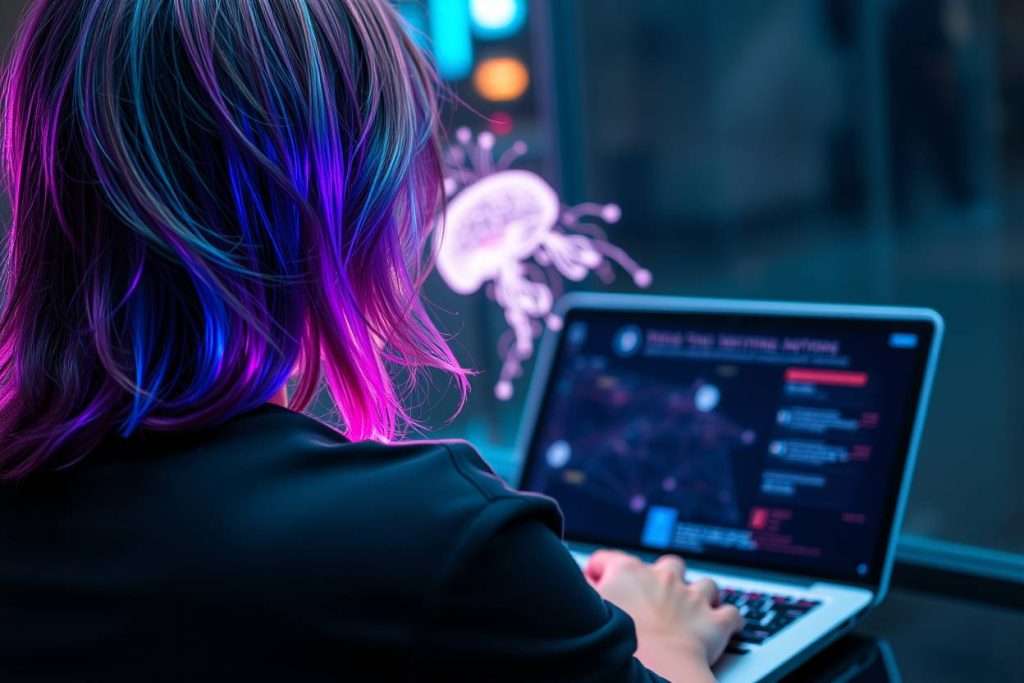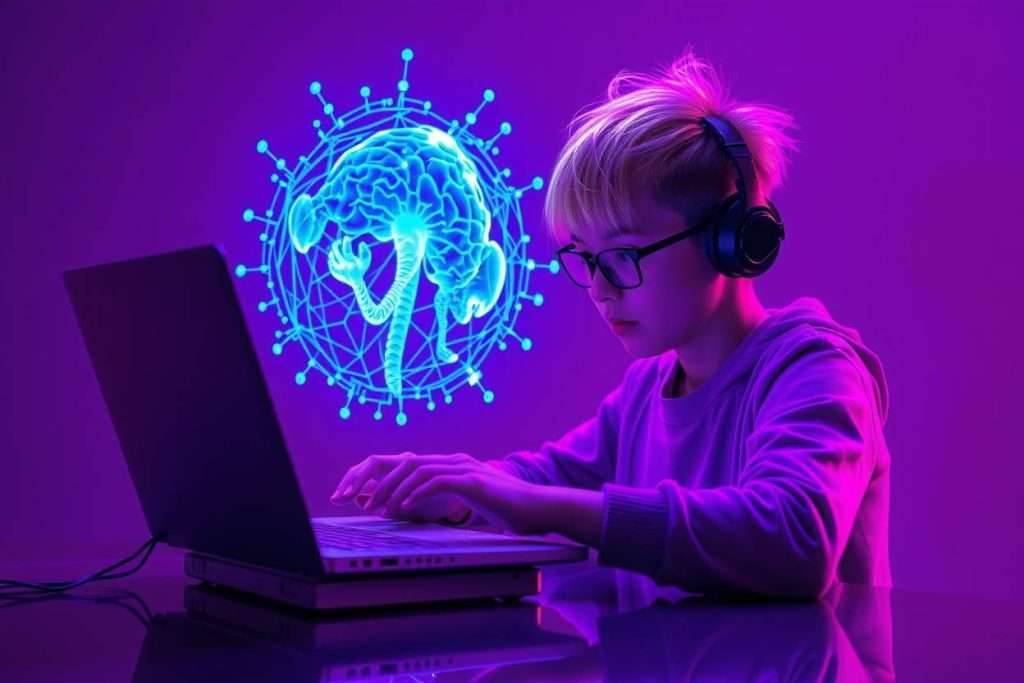Digital Literacy as the academic foundation for modern education

Digital literacy is no longer a supplemental skill confined to specialized courses. In today’s education systems, it has become a critical competency for navigating academic, professional, and personal spheres. However, many institutions still treat digital literacy as an optional add-on, separate from core subjects.
This outdated approach fails to prepare students for the realities of modern learning and work environments, where digital tools, and particularly AI, are integral to research, communication, collaboration, and problem-solving. The growing use of AI for writing papers further highlights the need for students to develop skills in evaluating digital content and using technology responsibly. Without a strong foundation in digital literacy, students may struggle to maintain academic integrity and critical engagement.
Integrating digital literacy as a foundational academic skill benefits not only students but also teachers and institutions seeking to foster more effective and relevant education. This article explores why digital literacy deserves a central role in curricula and how redefining it as an academic cornerstone will better equip students for success.
Redefining digital literacy for today’s learning landscape
Digital literacy is often misunderstood as basic computer skills or the ability to navigate software. This outdated view limits its potential impact on student learning. In reality, digital literacy now encompasses a broad set of competencies essential for academic, professional, and civic engagement.
Modern digital literacy includes:
- Critical thinking: Evaluating digital content, identifying misinformation, and engaging with information responsibly.
- Communication skills: Using digital tools to collaborate, present ideas, and adapt messages across platforms.
- Creative expression: Producing original digital content through writing, media design, and interactive formats.
- Prompt engineering: Communication beyond just simple commands and inputs, but building prompt engineering skills are important to communicate with AI tools or Agentic AI.
- Ethical participation: Understanding privacy, respecting intellectual property, and practicing responsible digital citizenship.
These are not isolated technical tasks but foundational skills that support learning across all subject areas. Digital literacy enables students to engage deeply with content, collaborate effectively, and navigate the digital aspects of their academic and personal lives.
For digital literacy to serve as an academic foundation, it must be embedded into everyday teaching, not treated as a separate or optional skill set. Redefining its role in education ensures students develop the competencies needed to succeed in a digitally-driven world.
Digital Literacy as critical thinking foundation

Information literacy is inseparable from critical thinking in modern education. Students are constantly exposed to a flood of information (and misinformation) across websites, social media, and digital publications. Without the ability to evaluate sources, identify misinformation, and analyze digital content, they cannot engage with knowledge in a meaningful or responsible way.
Embedding digital literacy into critical thinking development means teaching students how to assess credibility, understand bias, and differentiate between fact and opinion in digital contexts. These are not technical skills but essential cognitive abilities that underpin academic inquiry.
Moreover, digital platforms often present information in formats designed to influence perception through algorithms, targeted content, and persuasive design. Recognizing these dynamics requires critical awareness, which must be explicitly taught.
By positioning information literacy as a foundation for critical thinking, educators help students develop the analytical skills needed to navigate digital spaces with confidence. This approach prepares students to participate thoughtfully in academic discussions, civic life, and professional environments where digital literacy is as important as traditional literacy. Integrating these skills across subjects ensures that critical evaluation becomes a natural part of learning, not an isolated lesson.
Digital Literacy as communication and creation foundation

Digital literacy also serves as a foundation for effective communication and creative expression. In academic settings and beyond, students are expected to present ideas, collaborate with others, and produce digital content. Mastery of digital tools enables them to communicate clearly, responsibly, and persuasively in diverse formats.
Teaching e-literacy in this context involves more than technical proficiency. Students must learn to adapt their communication style to different platforms, whether writing an academic blog, creating a multimedia presentation, or participating in online discussions. Understanding audience, tone, and visual design becomes essential.
Creative digital literacy empowers students to move from passive consumers to active content creators. Skills such as video editing, infographic design, and interactive media production are increasingly relevant for academic projects and future careers.
By framing digital literacy as a communication and creation skill set, educators equip students with practical competencies that enhance learning and prepare them for real-world challenges. Integrating these capabilities across disciplines ensures that students develop as effective digital communicators and creative problem solvers, ready to contribute in academic, professional, and social contexts.
Artificial intelligence is making content creation faster and more accessible. Yet, human creativity and vision are still the driving force. Therefore, it’s crucial to combine digital literacy with creative insight, learn prompt engineering, understand automation, utilize AI tools, and manage AI Agents. This skillset defines the future of creativity for 2025 and onwards.
Digital Literacy as ethical foundation
Digital literacy is not only about technical proficiency or information analysis. It also forms the basis for ethical participation in digital environments. As students engage online, they face challenges related to privacy, digital citizenship, intellectual property, and respectful communication.
Teaching it from an ethical perspective involves helping students understand the consequences of their digital actions. They must learn to protect personal information, respect copyright laws, and engage in constructive online interactions. These principles are essential for responsible academic work and for participation in broader digital communities.
Key aspects of digital ethics include:
- Privacy awareness: Understanding how personal data is collected and shared online.
- Respecting intellectual property: Recognizing the importance of citing sources and avoiding plagiarism.
- Digital citizenship: Practicing respectful, responsible behavior in online discussions and collaborations.
- Managing digital footprints: Making informed choices about the content students share and how it affects their reputation.
By positioning digital literacy as an ethical foundation, educators prepare students to navigate the digital world with integrity. These skills foster a sense of responsibility that extends beyond the classroom, shaping students into thoughtful, ethical participants in academic, professional, and social digital spaces.
Implementation strategies for schools

Successfully integrating digital literacy requires a coordinated, school-wide approach. Key strategies include:
Curriculum Integration
Embed this discipline across all subjects. Teach source evaluation in history, ethical media use in science, and collaborative digital tools in language arts. This reinforces digital skills as essential academic competencies.
Professional Development
Offer continuous training for teachers. Educators need resources on emerging technologies, digital ethics, and strategies for fostering critical digital engagement.
Policy and Guidelines
Develop clear policies on responsible technology use, academic integrity, and online safety. These should be practical, consistently enforced, and regularly updated to reflect new challenges.
Student-Centered Projects
Encourage hands-on projects that require digital literacy, such as blogs, infographics, and multimedia presentations. These projects help students apply skills in authentic contexts.
Community Involvement
Involve parents and the school community through workshops and digital literacy resources. A shared understanding reinforces positive digital habits beyond the classroom.
Access and Equity
Ensure all students have access to necessary devices, reliable internet, and support. Addressing digital divides is essential for inclusive digital literacy education.
By following these strategies, schools can embed digital literacy into everyday learning, preparing students to navigate academic and digital environments with confidence and integrity.
Conclusion
Digital literacy is no longer optional. It is a key academic skill that supports critical thinking, ethical participation, communication, and creative expression. Schools must integrate digital literacy across curricula, ensuring students are equipped to navigate complex digital landscapes.
This requires intentional strategies, from teacher training to equitable access, to foster responsible and effective digital engagement. Digital literacy is not a single lesson or a temporary initiative; it is an essential competency that must evolve alongside technology and educational needs.
By repositioning digital literacy as a core academic foundation, educators can better prepare students for academic success, active citizenship, and lifelong learning in an increasingly digital world.




